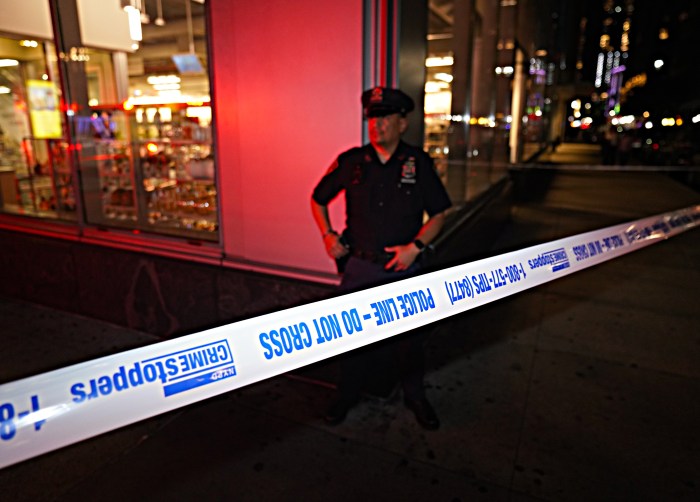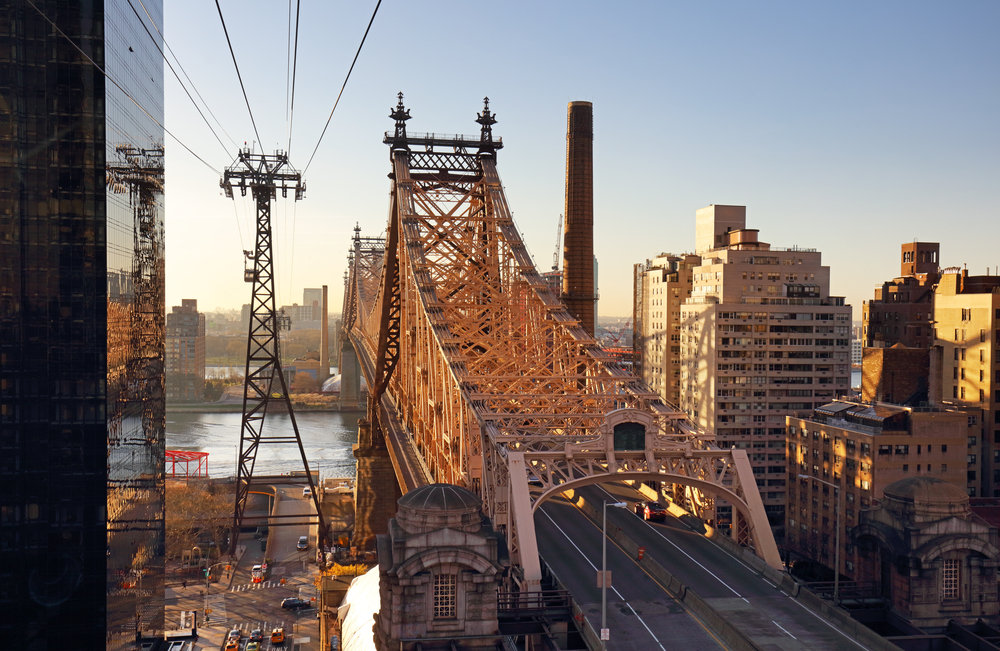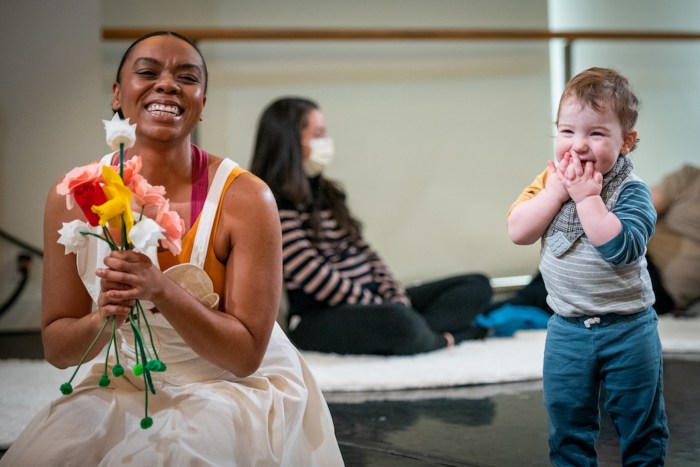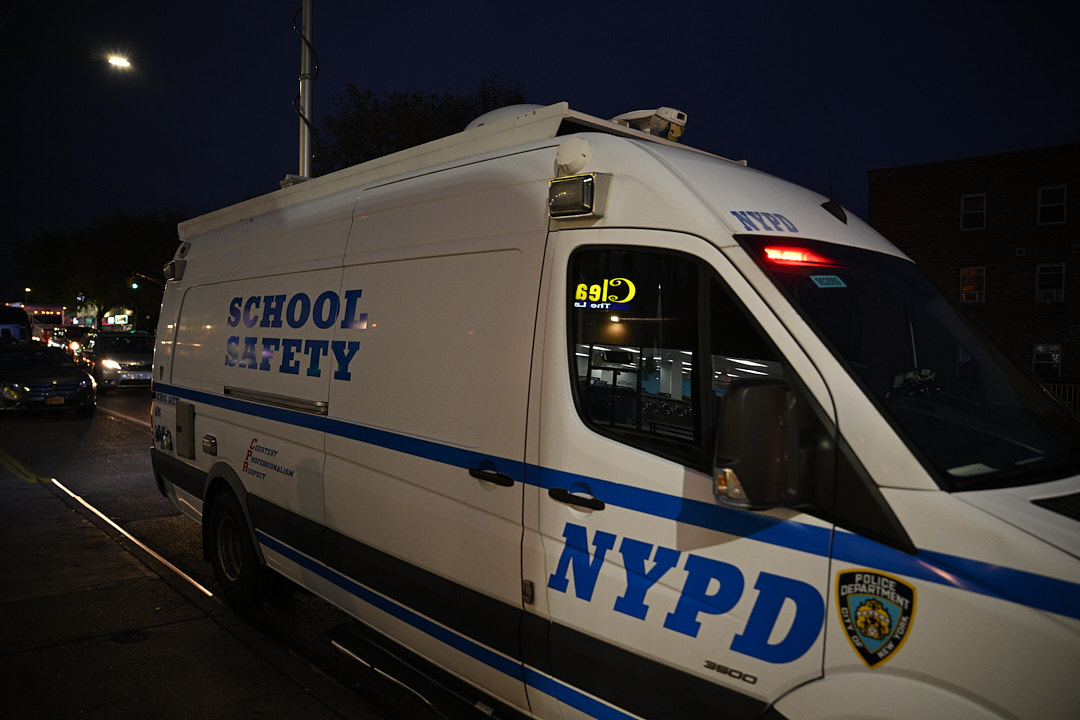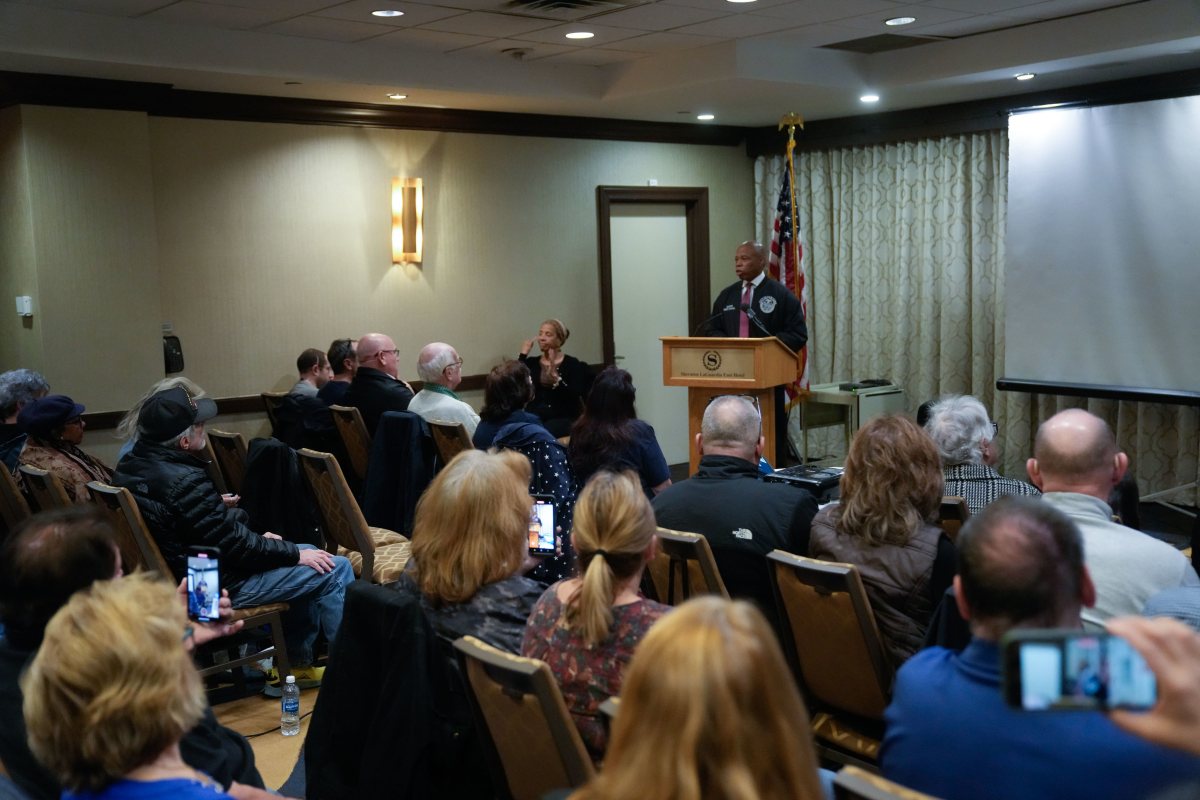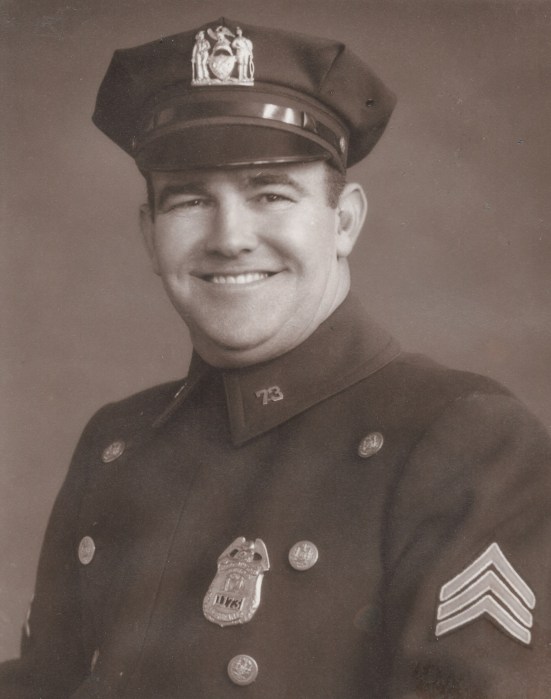The controversial travel ban enacted by the Trump Administration is the backdrop for a new Queens Museum exhibit titled “Executive (Dis)Order: Art, Displacement, & the Ban.”
But that feeling of vulnerability is not new to artists who often find themselves straddling different worlds, said curator Osman Can Yerebakan.
“I sort of wanted to expand the definition of travel ban to a more general idea of displacement,” said Yerebakan, an art writer and critic who lives in Long Island City.
The show, which opens on Saturday, includes the work of 11 artists from countries included in the so-called ban, including Libya, Iran and Syria. The countries were targeted for having large Muslim populations. Yerebakan curated the exhibit in conjunction with the Artistic Freedom Initiative, a nonprofit that assists immigrant artists with legal services and resettlement programs.
There’s the sculpture installation My Aqal, Banned & Blessed” by Ifrah Mansour, an artist who came to the United States from Somalia as a child. It includes eight miniature aqals — traditional Somali nomadic houses — crafted with fabric, bamboo sticks and twine. Inside each is a copy of her poem “I am a refugee.”
Libyan artist Reem Gibriel’s “In Sense of Remembrance” is comprised of a pillow, sound installation and floral smell to represent her memories of home.
Ink wash geometric drawings by Nooshin Rostami, an artist from Iran, show her joy at being able to climb a building after not being allowed to travel for several years because of her immigration status.
“It’s a metaphor for finally being able to go somewhere,” Yerebaken said.
Other artists in the show include: Rashwan Abdelbaki, Ali Chitsaz, Nadia Gohar, Ibi Ibrahim, Esperanza Mayobre, Remijon Pronja, Asiya Al-Sharabi, and Sufyvn.
Yerebakan said all visitors will be able to relate to the artists and their stories.
“You may not have experienced visa problems, but the idea of not being able to be where you want to be or not feeling safe is a human reality,” he said.
He also doesn’t want visitors to view the show as a collection of sad stories.
“I want it to be more uplifting and thought-provoking,” Yerebaken said. “There are all these narratives being presented in a beautiful way.”



